KubeVela is a modern software delivery control panel. The goal is to make application deployment and O&M simpler, more agile, and more reliable in today's hybrid multi-cloud environment. Since the release of Version 1.1, the KubeVela architecture has naturally solved the delivery problems of enterprises in the hybrid multi-cloud environments and has provided sufficient scalability based on the OAM model, which makes it win the favor of many enterprise developers. This also accelerates the iteration of KubeVela.
In Version 1.2, we released an out-of-the-box visual console, which allows the end user to publish and manage diverse workloads through the interface. The release of Version 1.3 improved the expansion system with the OAM model as the core and provides rich plug-in functions. It also provides users with a large number of enterprise-level functions, including LDAP permission authentication, and provides more convenience for enterprise integration. You can obtain more than 30 addons in the addons registry of the KubeVela community. There are well-known CNCF projects (such as argocd, istio, and traefik), database middleware (such as Flink and MySQL), and hundreds of cloud vendor resources.
In Version 1.4, we focused on making application delivery safe, foolproof, and transparent. We added core functions, including multi-cluster permission authentication and authorization, a complex resource topology display, and a one-click installation control panel. We comprehensively strengthened the delivery security in multi-tenancy scenarios, improved the consistent experience of application development and delivery, and made the application delivery process more transparent.
After solving the challenges of architecture upgrade and extensibility, we have noticed that the security of application delivery is a problem in the entire industry that needs to be solved urgently. We found many security risks from the use cases:
KubeVela 1.4 has added authentication and authorization capabilities and naturally supports a multi-cluster hybrid environment. Each KubeVela platform administrator can customize any API permission combination in fine granularity, connect with the Kubernetes RBAC system, authorize these permission modules to developer users, and strictly restrict their permissions. They can also easily use the permission module preset on the KubeVela platform. For example, they can directly grant a user the permissions on a specific namespace of a cluster and the read-only permissions. This simplifies the learning costs and mental burdens of users and comprehensively strengthens the security of application delivery. The system automatically completes the underlying authorization and strictly verifies the scope and type of resources available for the project for users who use the UI, so the business layer RBAC permissions and the underlying Kubernetes RBAC system can be connected and work together to achieve security from the outside to the inside without expanding the permissions in any link.
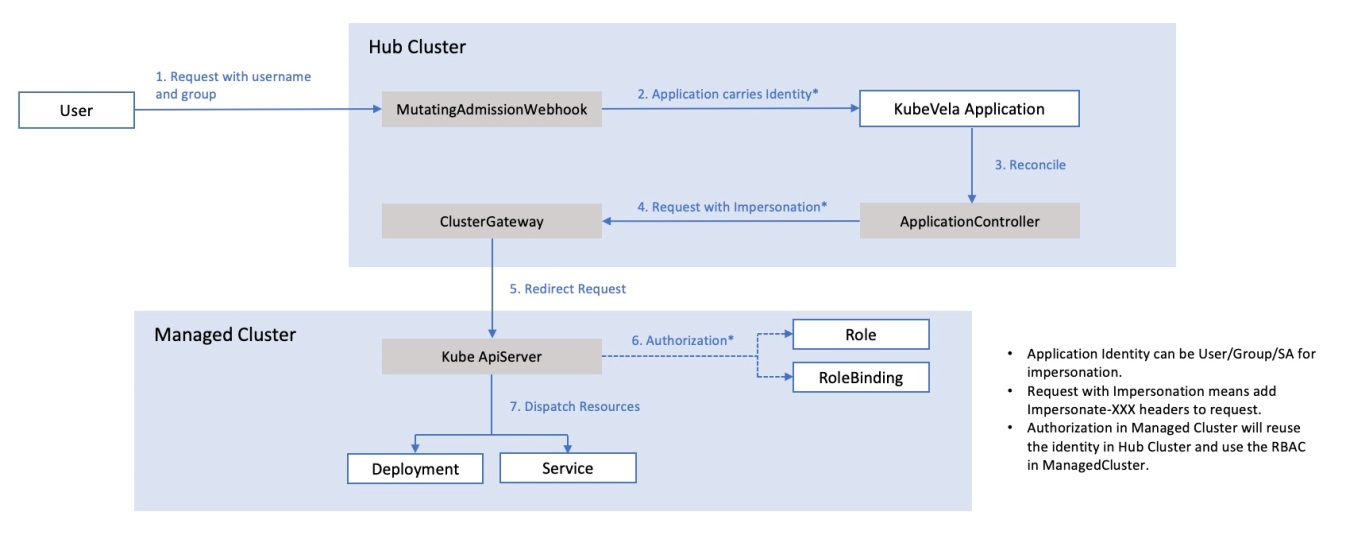
Specifically, after the platform administrator authorizes a user, the user's request will go through several stages (as shown in the figure).
In short, KubeVela's multi-cluster authentication and authorization ensure that the permissions of each end user are strictly restricted and will not be amplified by the delivery system. At the same time, KubeVela's permissions are minimized, and the entire user experience is simple.
Please read the official Permission Authentication and Authorization to learn more about the operating mechanisms behind them.
With the prosperity of the ecosystem, we have seen more developers begin to pay attention to cloud-native technology, but they often don't know how to get started. The following are the main reasons:
We have also observed in the community that more companies are beginning to realize that self-built platforms cannot keep up with the development of the community ecosystem. They hope to provide a consistent experience through KubeVela and OAM models without losing the scalability of the ecosystem. However, since KubeVela's control panel relies on Kubernetes, the threshold for getting started is still not low. In response to this problem, the community has been thinking and looking for solutions. We conclude that we need a tool that has these characteristics:
After several months of incubation, we can finally release this tool in 1.4: VelaD. D represents Daemon and Developer. It can help KubeVela run on a single machine and does not rely on any existing Kubernetes cluster. At the same time, it works as a lightweight application development control panel with KubeVela, helping developers obtain integrated development, testing, and delivery experiences and simplifying the complexity of cloud-native application deployment and management.
You can use the Demo documentation to install and try this tool to learn more about the implementation details. It only takes three minutes to initialize the installation.
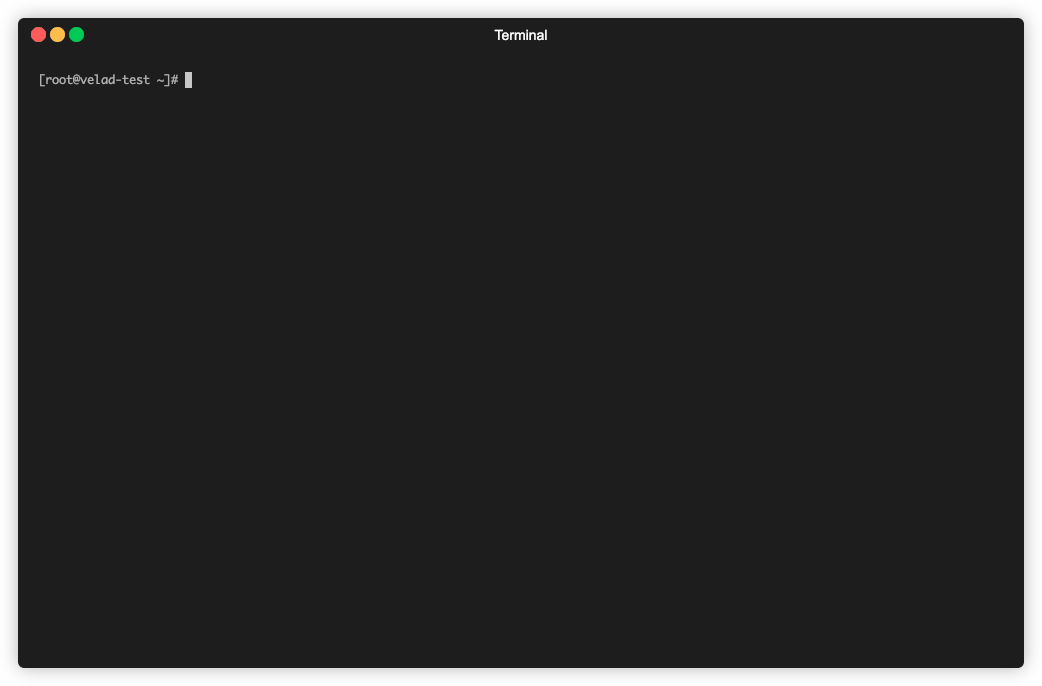
Another big demand in application delivery is the transparent management of the resource delivery process. For example, many users in the community like to use Helm Chart to package a lot of complex YAML together. However, once there are problems in the deployment, it will be difficult to troubleshoot due to the overall black box (even if it is a small problem). Some problems include the underlying storage is not provided normally, the associated resources are not created normally, and the underlying configuration is incorrect. There are many types of resources (especially in the modern hybrid multi-cluster hybrid environment) and how to obtain effective information from them and solve problems is a challenge.
In Version 1.4, we added the resource topology query function to improve KubeVela's application-centric delivery experience. When developers initiate application delivery, they only need to care about simple and consistent APIs. When they need to troubleshoot problems or focus on the delivery process, they can use the resource topology feature to quickly obtain the orchestration relationships of resources in different clusters from applications to the running status of Pod instances and automatically obtain the relationships of resources, including complex and black-box Helm Chart.
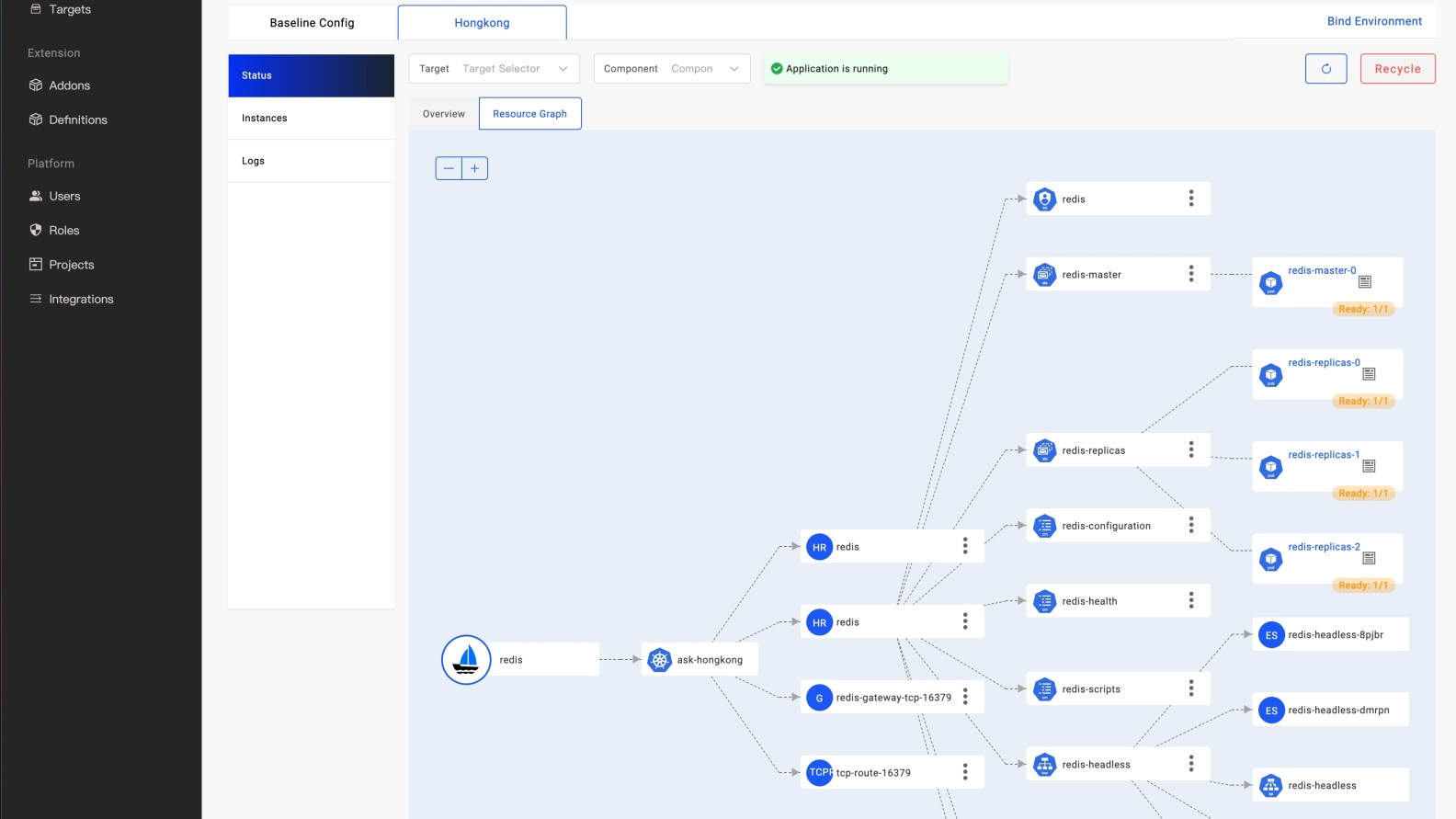
The application shown in the preceding figure is used as an example. A Redis cluster is delivered through the Helm Chart package. The first layer of the chart is the application name, the second layer is the cluster, and the third layer is the resources directly rendered by the application. The next third and fourth layers are the associated resources of the lower level tracked according to different resources.
Users can use graphs to observe the derived resources and their status during the application delivery process. The abnormal points are displayed in yellow or red and the specific reasons are displayed. Compared with the application shown in the following figure, it is a basic Webservice delivered to two clusters. Developers can find that the application creates Deployment and Service resources in the two clusters, respectively. Also, the Deployment resources in the ask-hongkong cluster are displayed in yellow since the Pod instance has not been fully started.
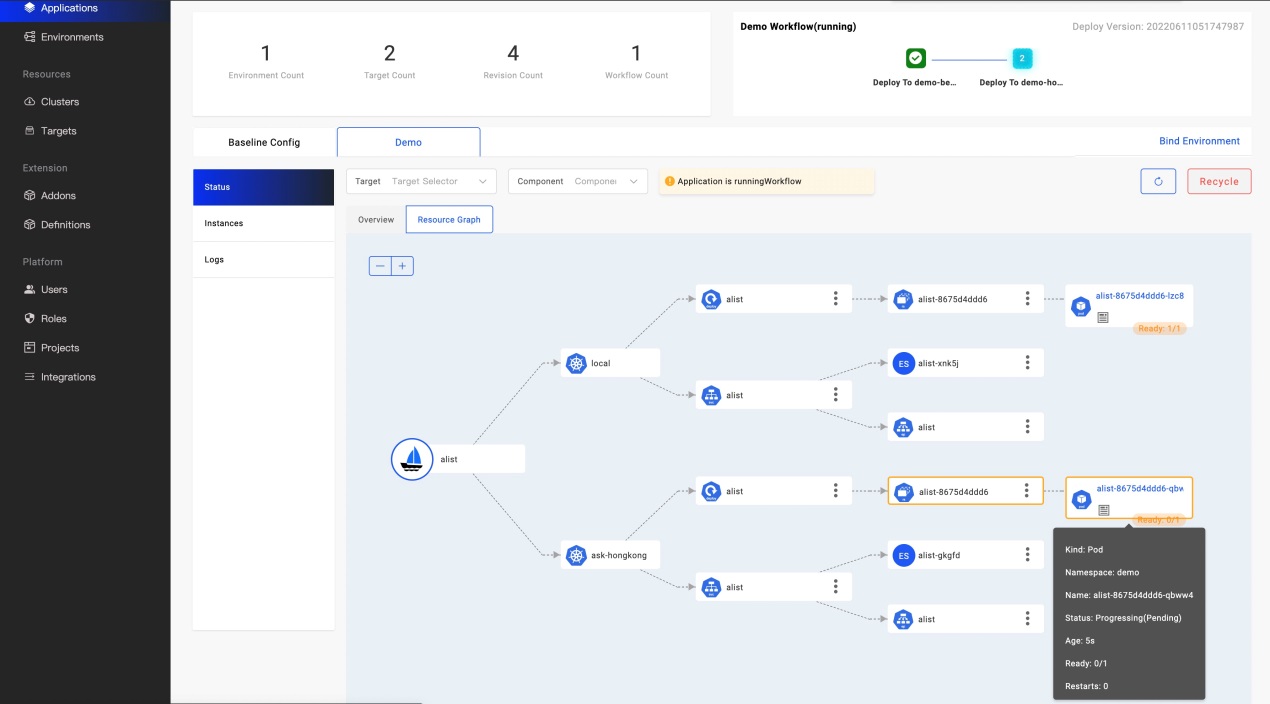
This feature also allows you to search, filter, and query using different clusters and components. This helps developers quickly identify problems and understand the delivery status of the underlying application at a very low threshold.
Please read the official blog Visualize the Topological Relationship of Multi-cluster Resources to learn more about the operation mechanism behind them.
In addition to the core functions and plug-in ecosystem, Version 1.4 also enhances core functions such as workflow:
Thanks to the continued contributions and efforts from more than 30 organizations and individuals in China and internationally (such as Alibaba Cloud, China Merchants Bank, and Napptive), more than 200 functional features and repairs were completed in a short period of two months, which has made this iteration excellent.
Please see the release details for more information.
Our plug-in ecology is also rapidly expanding because of the improvement of the 1.3 addon system:
Developers are welcome to participate in the community and create addon to extend KubeVela's system capabilities.
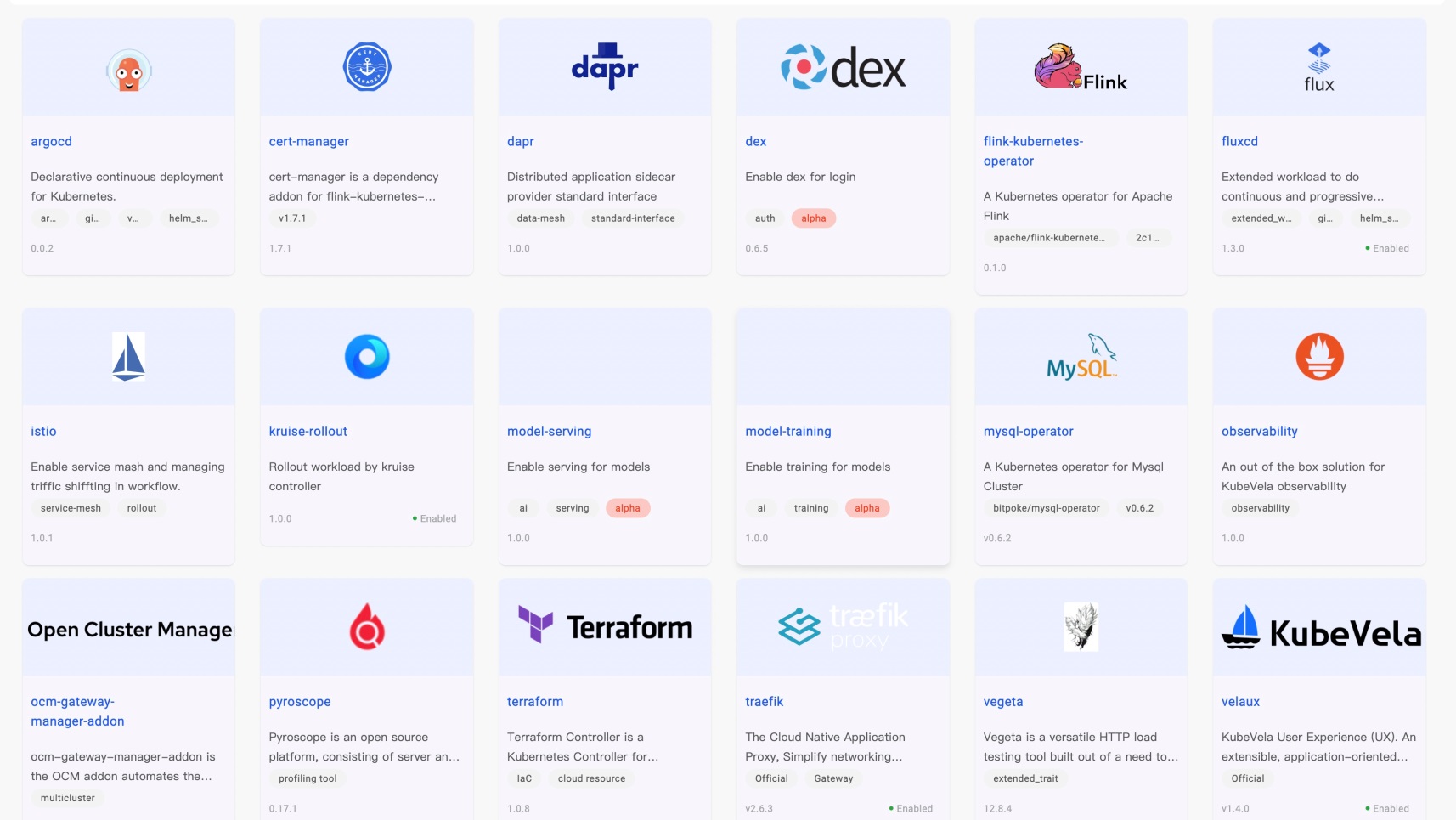
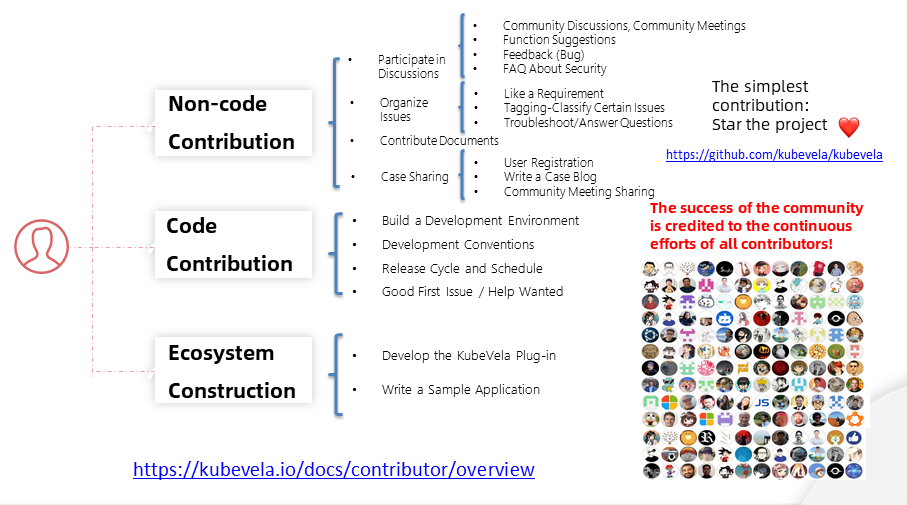
KubeVela is an open-source, worldwide, Top-Level Project in the CNCF Foundation. There are more than 300 domestic and international contributors and more than 40 community members and maintainers. It is a bilingual international operation mode with more than 4000 community members, including code, documents, and community communication.
If you are interested in participating in the open-source community, we welcome you to join the KubeVela community. You can learn more about the methods of participating in the open-source community through the developer documentation of the KubeVela community. The engineers of the community will guide you.
KubeVela will continue to evolve around an iterative cycle of two months. We will focus on these three dimensions in the next release:
If you want to learn more about planning and become a contributor or partner, you can contact us by participating in community communication. We are looking forward to hearing from you!
Sealer Becomes CNCF Sandbox Project to Build New Standards for Distributed Application Delivery
How to Build Flexible Abstraction for any Kubernetes Resources with CUE and KubeVela

514 posts | 50 followers
FollowAlibaba Cloud Community - June 24, 2022
Alibaba Cloud Native Community - November 11, 2022
Alibaba Cloud Native Community - September 16, 2022
Alibaba Cloud Native Community - December 23, 2021
Alibaba Cloud Native Community - February 9, 2023
Alibaba Cloud Native Community - November 16, 2022

514 posts | 50 followers
Follow DevOps Solution
DevOps Solution
Accelerate software development and delivery by integrating DevOps with the cloud
Learn More Alibaba Cloud Flow
Alibaba Cloud Flow
An enterprise-level continuous delivery tool.
Learn More Container Service for Kubernetes
Container Service for Kubernetes
Alibaba Cloud Container Service for Kubernetes is a fully managed cloud container management service that supports native Kubernetes and integrates with other Alibaba Cloud products.
Learn More Cloud-Native Applications Management Solution
Cloud-Native Applications Management Solution
Accelerate and secure the development, deployment, and management of containerized applications cost-effectively.
Learn MoreMore Posts by Alibaba Cloud Native Community